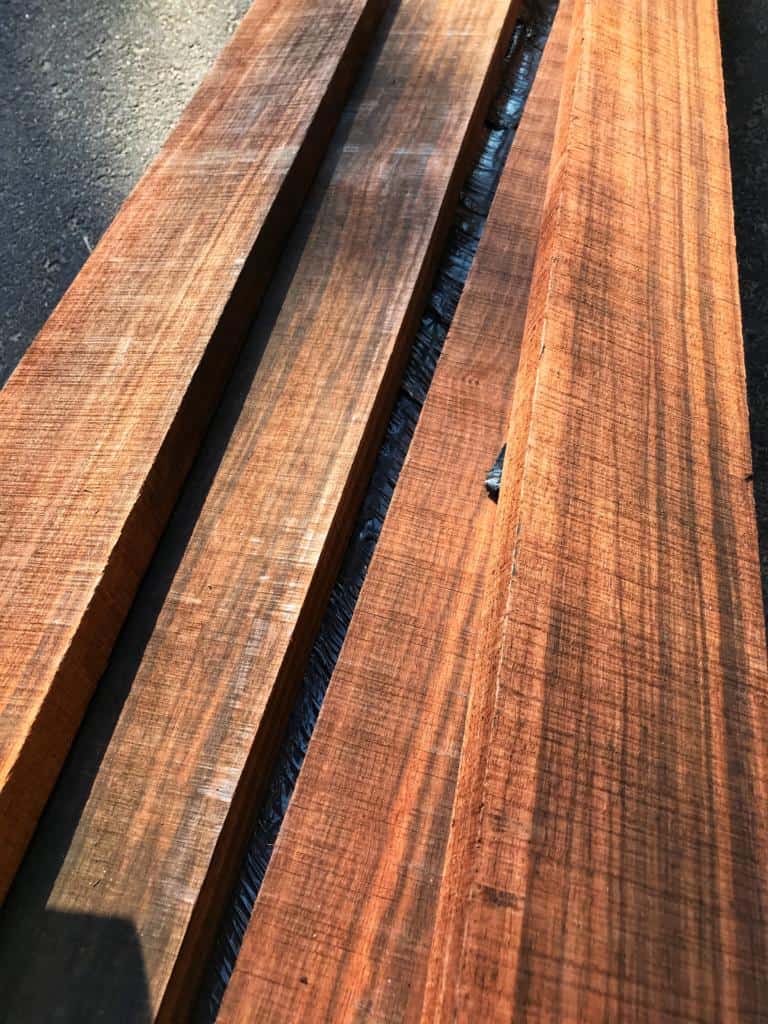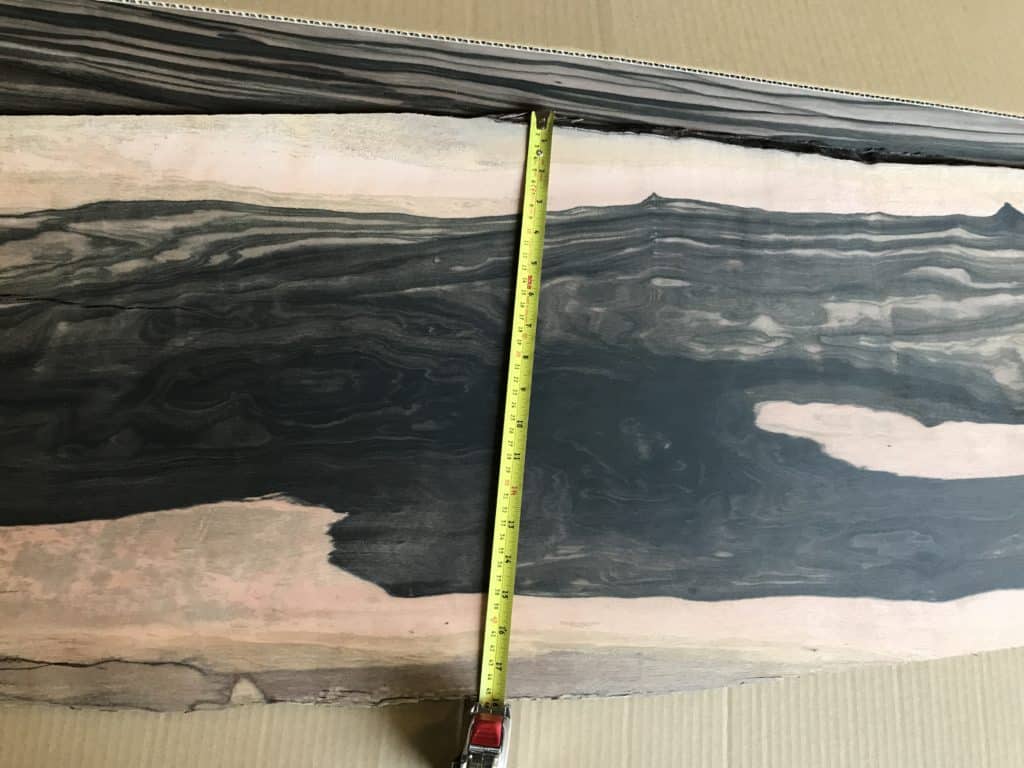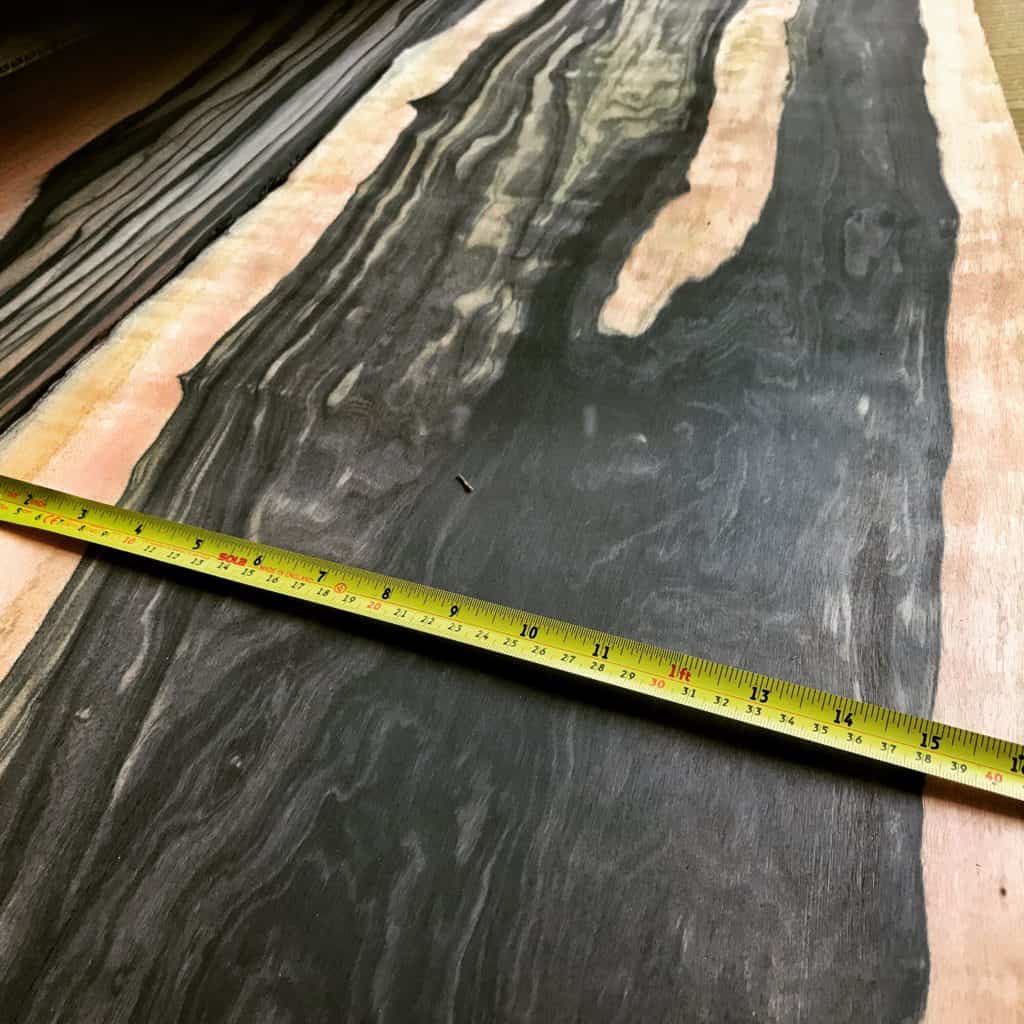
There seems to be a correlation between the cost of an imported wood and the likelihood of it end-checking. Typically imported woods (exotics) are more expensive than their domestic counterparts. All too often they develop unsightly end checks rendering them difficult to market.
What Causes End Checks?
According to the Standard Grading Rules for Canadian Lumber, a check is a “separation of the wood normally occurring across or through the rings of annual growth and usually as a result of seasoning.” This defect is can happen to any wood specie, from mahogany to maple. Understanding the science behind what’s happening is key to preventing it.
This defect is can happen to any wood specie, from mahogany to maple. Understanding the science behind what’s happening is key to preventing it.
Although seasoning is often the culprit, checking can occur as a result of environmental issues as well as issues related to the actual wood specie. The idea of eliminating end checking entirely is futile. The most we can expect is to keep it within a reasonable level. For the purposes of the article, I assume that we are dealing with either kiln dried or reasonably well air-dried lumber rather than green wood.
Typically, checking results from wood that dries and shrinks at uneven rates. With end checking, this means that moisture is escaping out of the end grain of the wood much faster than the interior portion of the board. The ends move while the center of the board does not. Hence, the ends break free and check.
Why Are Imported Woods Prone to Checking?
There are several reasons why imported woods are prone to more end-check issues than domestic woods.
-
Specie. First, certain species of wood are more likely to check than others. This is because wood is most likely to check along the rays. Thus, the woods with large rays, White Oak and North American Beech, for example, are the more likely to check than their smaller ray counterparts, such as White Hard Maple or American Cherry. In terms of imported woods, Jatoba or Brazilian Cherry is more likely to check than Genuine Mahogany, for example.
- Board Size. Many imported woods are sawn at relatively large sizes. We often find 15″ inch wide Mahogany boards. Occasionally, this results in the board not equalizing consistently and developing checks, twists and splits. The edges of the board may be drying out from wind exposure while the center remains at a higher moisture content, for example. In smaller boards, variation in moisture content across different areas of the board is typically minimal and not enough to create stress resulting in checks.
- Kiln Drying. The quality and method of kiln drying affects wood stability and thus, likelihood of checking.
Different kiln drying standards.
Woodworkers often assume that wood is kiln dried to the same standard regardless of its country of origin. However, the main purpose of kiln drying is to bring wood down to a workable level. Workable means different things to cultures. The one wood drying principal that is universal is that over-drying causes honeycomb and ruins the wood. With that in mind, kiln operators are unlikely to push the envelope to reduce that last 2-3% of moisture if they don’t have to. Less sophisticated high volume kiln operations have even less margin for error. Additionally some timber export destinations have their own moisture content standard. For example, Europe’s preferred moisture content for kiln-dried woods is 12-15% compared to 6-8% in the United States. . This is because their overall climate is wetter than ours. Much of the imported lumber that comes into the Unites States is actually dried to European specifications. Some US companies re-dry their imported woods to US standards after arrival. However, many companies skip that step and market the product as soon as it lands.
Can we fix the kiln drying process?
Yes. However, most of the woodworkers dealing with this issue are not drying their own lumber. The more pragmatic solution involves the handling and treatment of lumber that has not fully acclimatized to its current environment.
My Lumber is Checking, Help!
Got it. Enough with the background and explanations. Your wood is checking and you want to know what to do.
Over the course of my lumber career I have tried several methods to stave off end checks. Many people suggest painting or sealing the end grain. I am not a fan of this method. It’s cumbersome, time consuming, expensive and not as effective as you’d think.
Our Simple Method
- Check the moisture content of the wood with a good moisture meter. If your meter does not have an adjustment feature for specific gravity, make sure you make a manual adjustment in your calculations.
- If the wood has too much moisture, stack it on stickers. Allow at least 1/4″ gap between boards to facilitate air flow.
- Plastic wrap or bag the ends so the end-grain is covered.
- Wait unit the wood has equalized and then remove from sticks. Again, using the moisture meter to take readings in different areas of the board is the best way to confirm that the board has equalized.
We accelerate the moisture dissipation rate of the board faces while slowing down the dissipation rate at the board ends. Any movement in the lumber takes place in sync so there is minimal, if any internal stress developing. Accordingly, end checking is greatly reduced.
Occasionally, if we have an expensive import wood in the warehouse, I may cover the end-grain with plastic or paper, even if the wood is properly kiln dried. It’s a worthwhile precaution due to the cost of the lumber. For example, losing 6″ off the end of a low grade Spanish Cedar board may cost us a few nickles, less than the labor involved to prevent the end checking. The same 6″ end cut on a Figured Black Limba or Koa board is much more valuable. Like many things in life, it boils down to dollars and cents.
If there is a major problem with moisture you may consider putting the wood back into a kiln. For the purposes of this article, I’m proposing a non-kiln solution. If you own your own kiln, you’re probably not Googling end checks for an answer.
One Critical Tool

If you work with wood in almost any capacity, you should own a good moisture meter for wood. Don’t waste your money on $25 wall board meters.
The absolute best value moisture meter I have found is the Wagner Orion 930. Accurate readings, easy to adjust for different specie readings, no pins to damage the wood. Most importantly, it can read moisture deep into the wood. My Wagner has paid for itself many times over. It’s been with me for years.
Macassar Ebony Is Prone to Checking
Macassar Ebony is a beautiful and expensive wood. However, due to its density, it is prone to surface checks. Thus, clean clear Ebony sells at a high premium. The 17″ wide board below is rare for its width and clarity.


Below is a recent video of us sawing a 20″ x 20″ imported wood timber. Specifically, this massive timber is Guanacaste, otherwise known as Parota.
While I didn’t take my Wagner moisture meter to this massive timber, I can assume you it was not thoroughly dry.
We sealed the end-grain while it was still 20″ thick. Then, after it was sawn into 8/4 x 20″ slabs on the Woodmizer, we stacked on 1″ stickers and bagged the ends.
The freshly sawn Parota wood in our video is acclimating nice nicely with minimal checking and no warping.

Pingback: 🌳 Pau Ferro: Indian Rosewood Alternative - Commercial Forest Products
Pingback: 🌳 Swamp Ash Wood - Definitive Guide - Commercial Forest Products
Pingback: 🌳 Spanish Cedar for Humidors & Guitars - Commercial Forest Products
Pingback: 🌳 Black Limba Wood - A Helpful Illustrated Guide - 2019
Pingback: Three Unique Types of Treated Wood and How to Use Them -
Pingback: 8/4 Kingwood: Rare Exotic Hardwood Lumber - Commercial Forest Products
Pingback: 8/4 Kingwood: Rare Exotic Lumber - Commercial Forest Products 2020
Pingback: ROASTED MAHOGANY WOOD | LUMBER - Commercial Forest Products
Pingback: EBONY LUMBER | Macassar Ebony Wood - Commercial Forest Products
Pingback: Top 5 Hardwoods In California 2021 - Commercial Forest Products
Pingback: How Much Lumber Fits In A 40' Container? - 2021